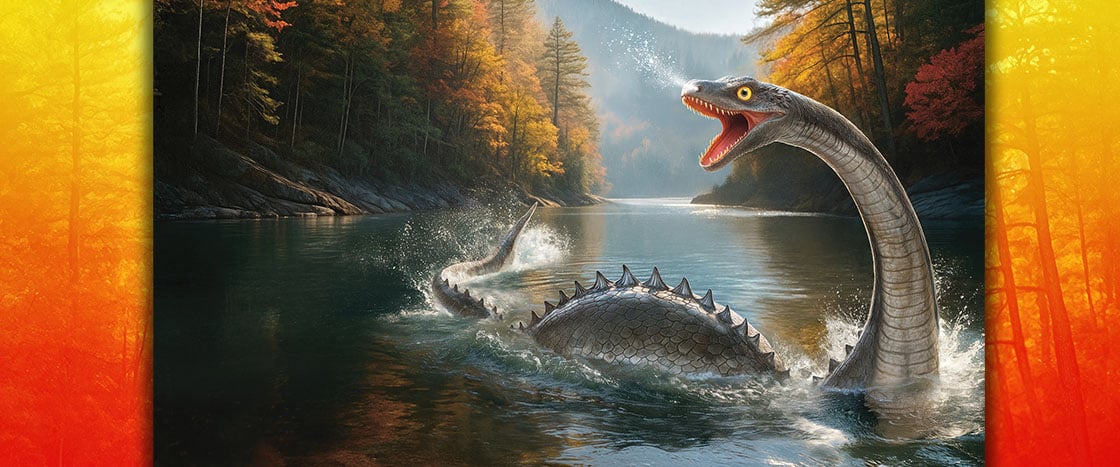On a still morning on July 22, 1819, a man named Captain Crum climbed into his wooden boat. It seemed like any other day on Lake Champlain, the long, thin lake nestled between Vermont and New York. Blue-green waves rippled gently in the breeze. Thick trees lined the edges of the water. In the distance, towering hills rose toward the bright sky.
Then Captain Crum saw something he would never forget: A mysterious head rose out of the water, followed by a large body and a tail. The captain was stunned.
The beast looked more than 180 feet long—much longer than his boat, and definitely longer than any animal he had ever seen. It had big, yellow eyes and a red streak around its neck. The creature swam quickly across the lake, lashing its huge tail. Then, suddenly, the giant monster dove under the water’s surface. It was gone in about a minute.
Terrified, Captain Crum rushed to tell people what had happened. His experience was written about in a local newspaper. As the news spread, some people didn’t know what to think. But others believed they knew exactly what Captain Crum had seen: a lake monster now known as Champ.
It was a still morning on July 22, 1819. A man named Captain Crum climbed into his boat. It seemed like any other day on Lake Champlain, a long lake between Vermont and New York. Waves moved gently. Trees lined the water. In the distance, large hills rose toward the sky.
Then Crum saw something he would never forget. A mysterious head rose out of the water. The head was followed by a large body and a tail. The captain was stunned. The beast looked more than 180 feet long. It was longer than his boat and longer than any animal he had ever seen. It had big yellow eyes and a red streak around its neck. The creature swam quickly across the lake, its huge tail moving back and forth. Suddenly, the giant monster dove under the water’s surface. It was gone in a minute.
Captain Crum was terrified. He told people what had happened. And his experience was written about in a local newspaper. As the news spread, some people didn’t know what to think. But others believed they knew exactly what Crum had seen: a lake monster now known as Champ.



